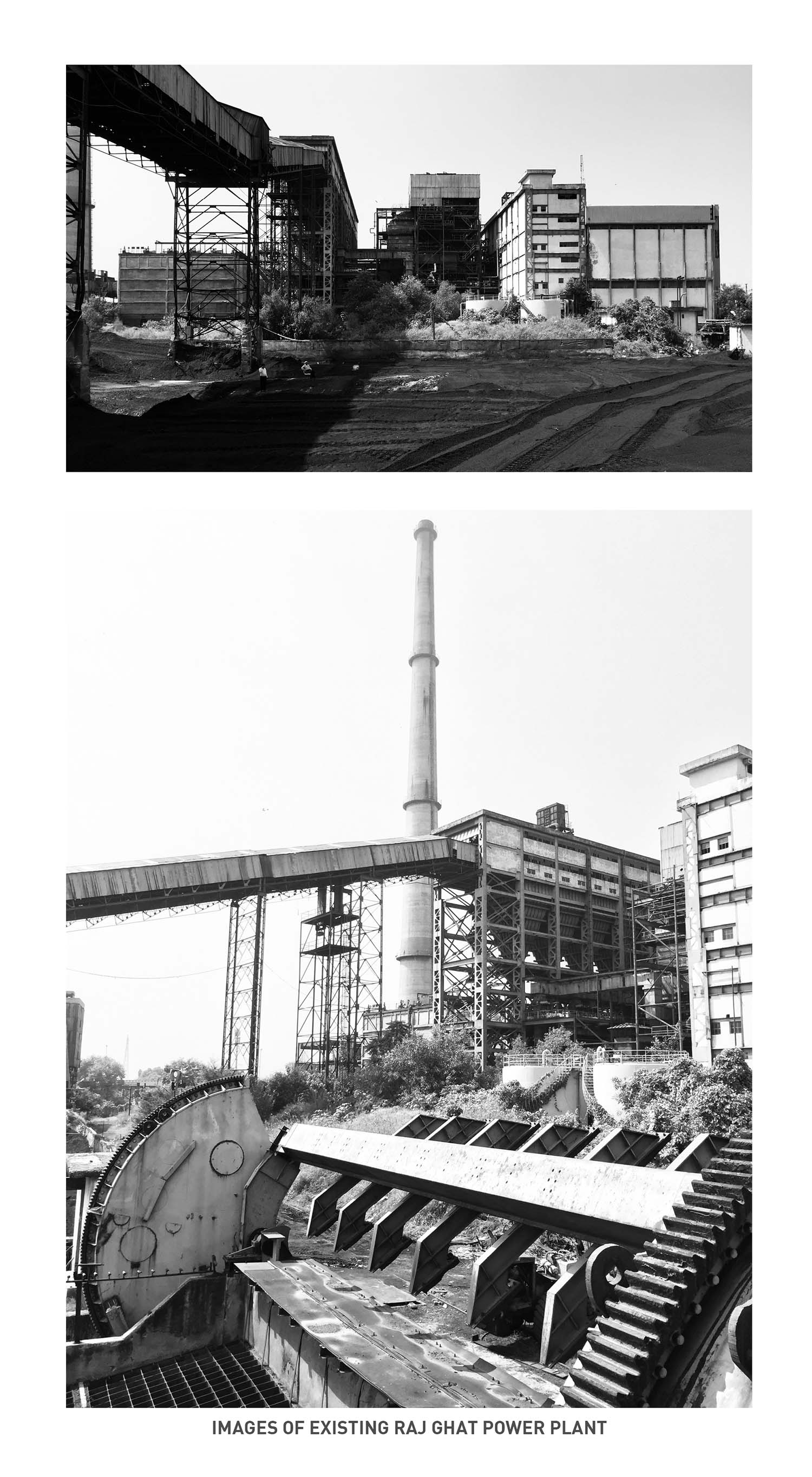Aarushi Kalra of rmdk architects, for her thesis designed a conceptual adaptive reuse proposal for the soon dysfunctional Rajghat Power Station, New Delhi, India, to be built as a Fashion Hub.

Located in the cultural hub of the city, in close proximity with all prominent infrastructure of Delhi, the urban scape is transformed into an icon for fashion and design. The proposed design is the juxtaposition of fashion’s ability to seduce and manufacture desires with the complex structuring of neutral spaces to allow for a multiplicity of users and events. At the city scale, the luminous and dynamic layers of building skin attracts and lures; as users approach and ultimately enter the building, the imagery is transformed into unique atmospheric experiences. This project harnesses the glamour of fashion as the medium to ignite the re-imagination of architecture’s value and the interpretation of beauty and style, providing the means for experiences to transcend into a world of spectacle.
The built environment provides a footnote to our histories, helping to identify our places as Indian, rather than generically ‘modern’ or ‘contemporary’. Historic buildings give us a glimpse of our past and lend character to our communities. The Fashion Hub in this context, connects the three main sectors of the field. ‘Learn’ allows exposure to traditional techniques and new technologies. ‘Do’ houses designers and makers. Incubator units and mentoring programs offer support and nurturing for future brands and craftsmen. ‘Sell’ makes it a destination of choice for the world’s buying market. Keeping the important structures of the power plant in place, structural and programmatic changes were introduced to reinvent the complex. Immense importance was paid to the landscape and laying out of smaller functions to add a sense of scale and life to the expansive urbanscape.
Inspired from the tying style of the Indian garment-a saree, various explorations were done by pleating fabrics in different ways to form architectural forms. Being a fashion hub, the intention was to draw inspiration for the built form from folds of fabric. Blurring proposes new ways of thinking about architecture, presenting new ideas of what architecture can be. It creates an awareness that architectural design involves more than materials and static forms, it doesn’t necessarily need to have boundaries.
The environment has been so designed to implicate what fashion stands for – an ever-changing environment. As one looks around, platforms at various levels can be seen harbouring a variety of activities. With each new turn, comes a new experience may it be a fashion show against the Chimney, a visit into the studio courtyard to interact with various designers or losing oneself in the sweeping walls of the bazaar.
Image 05: Standing by the water body, one can experience the reminiscent of the railway line with a coal trolley. As one looks up, the coal mill comes into focus that has been modified to line with fins that guard it from the harsh sun while maintaining character. The front of the coal mill has been modified to form a stage set for exhibits, while the coal hoppers form a backdrop for the projection of shows and visuals.
Image 06: As one walks up the flight of stairs, a feeling of awe is instigated seeing the stark contrast between the rigid Power Plant woven with an entirely new language. The large floor skylights, the swooping strips, add a sense of scale to the space, giving an awespiring yet comfortable experience.
On one side is the turbine hall, boldly treated with a piercing cut out, while on the other is the coal mill that has been minutely altered to keep the industrial character intact. Both are connected by strips in metal, that form bridges, walkways and a backdrop for the amphitheater.
Fashion and architecture were overlaid to treat the Rajghat Power Plant in a design language that does not overpower the existing framework adds stylistic qualities of fashion to an industrial complex in a bold manner.
Image Credits for exiting Power Plant: Saurabh Suryan














